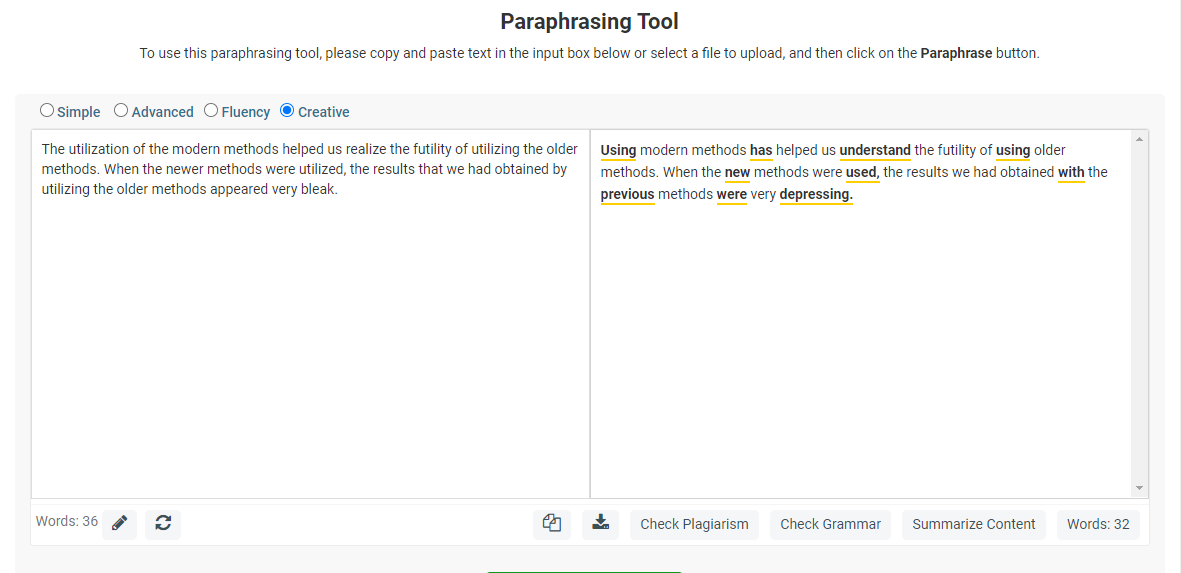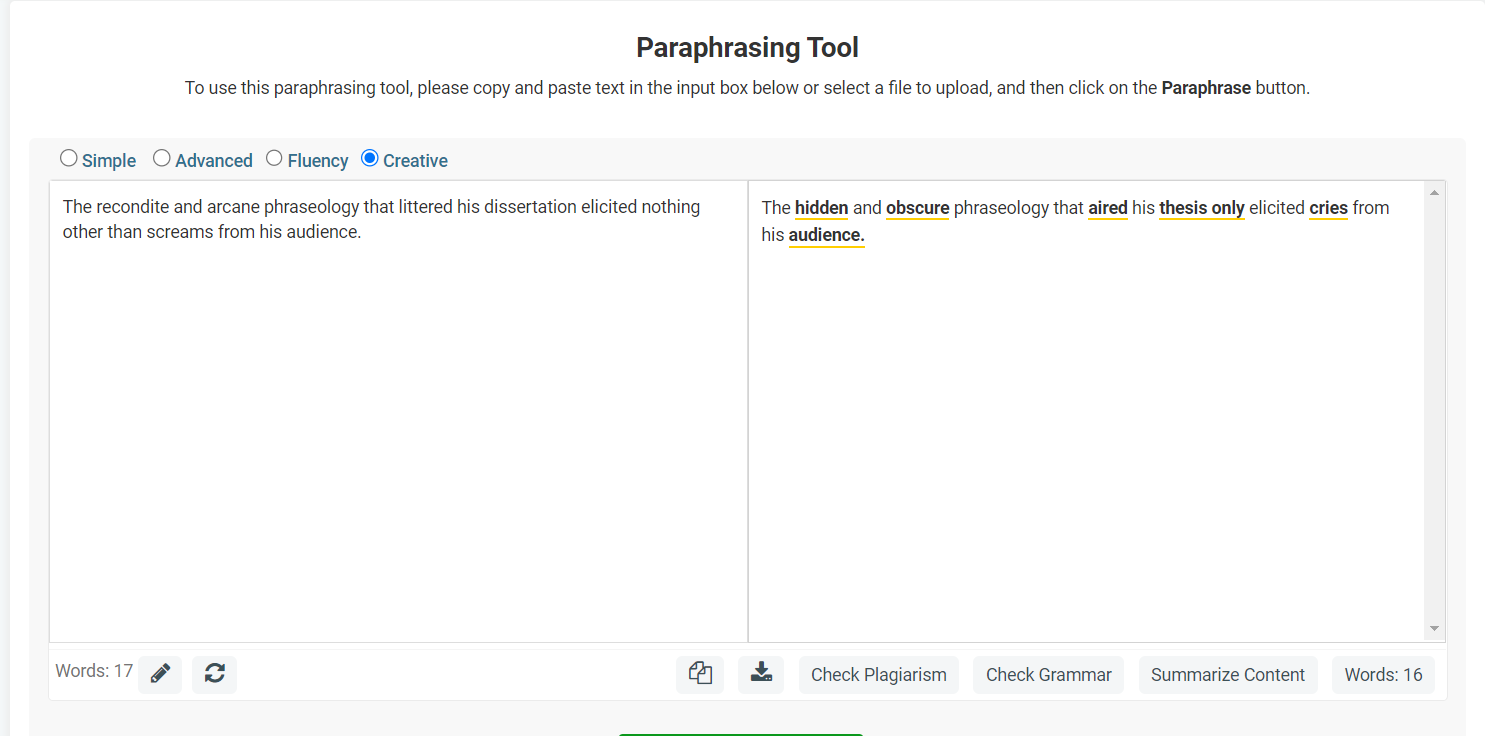Blog
How Paraphrasing Can Help You in Writing Academic Documentation?

To begin with, we should clarify that this post is not about utilizing paraphrasing as a shortcut or as any sort of unethical method for writing academic documents. Rather, the theme of this article is to discuss the use of paraphrasing as a constructive technique in order to improve and enhance the quality of the academic content as well as to get better ideas about writing it.
Now that we’re done with that, let’s properly come to the introduction.
When it comes to writing academic documentation, there are a number of factors that you have to work on in order to make it (the documentation) high-quality. For example, you have to keep everything readable but at the same time, you have to add enough complexity so that the content is engaging and interesting to read.
Paraphrasing can basically help us in improving these types of aspects during the writing phase.
How Paraphrasing Can Help You in Writing Academic Documentation?
Before getting to how paraphrasing tool can help you in writing academic documentation, we should clear up something first.
There are two different methods that you can employ for paraphrasing content. You can either do it manually, or you can do it by utilizing a paraphrase tool. Using a tool is usually much quicker and more efficient. However, the latter method (i.e., doing it manually) can be a lot more thorough and smart as compared to the former.
With that all cleared up, let’s move on to discuss some ways in which paraphrasing can help you in writing academic documentation.
Paraphrasing Can Help in Removing Repetition from Your Documentation
Redundancy and repetition in a piece of academic content can be detrimental to the overall quality. It can make your content writing look amateurish and it can also leave a negative impression on the mind of your reader.
Using a paraphrase tool can be a great way to fix this sort of issue. One of the main changes that a paraphrasing tool makes to the given content is to replace some (or most) of the words with their relevant synonyms.
Now, if there happens to be a repetition of the same word in your writing, the tool will automatically replace some instances of it with suitable alternatives.
An example of this can be seen in the screenshot below.
Paraphrasing Can Help in Simplifying the Content
This is another benefit that you can get by using a paraphrasing tool for your academic document.
Just as repetition can damage the readability and quality of your content, so too can complex words and terms. If you happen to use a lot of them when writing an academic document, your work can start to look like a whole lot of gibberish.
This is where you can use paraphrasing tools to get some help.
If you find that a particular piece of text in your document is too rich with complex words, you can run it through a paraphraser. Since the tool will use synonyms in place of the original ones, the difficult words will be replaced with their not-so-difficult alternatives.
Here is what this can look like in action:
Frankly, the tool did pretty well here.
Paraphrasing Tools Can Help Remove Plagiarism
When writing any sort of documentation – especially academic – there is a lot of chance of committing plagiarism. Even if there is no intention to do it on the writer’s part, it can still occur due to the sheer amount of content available online.
It is for this reason that every writer should check their content for plagiarism using a plagiarism-checking tool once they are done writing it.
Now, checking the content is good and all, but what should you do if the results show that a significant portion of it is plagiarized?
There are usually three steps that can be employed for removing plagiarism and making the document unique again. You can either remove the duplicated parts altogether or you can rewrite them using a paraphraser. You can also simply give a citation, but this can be difficult to do if you’ve already used a lot of them.
Let’s demonstrate how paraphrasing tools can help remove plagiarism by using a live example.
This is a piece of content that we took from an online source. As you can see, it is being detected as plagiarized since…we literally just copied it.
Now, let’s take this content and run it through a paraphrasing tool.
As you can see in the screenshot, the sentences are changed considerably. And if we were to take these edited sentences and run them through the same plagiarism checker, the results will come back as 100% unique.
Conclusion
And that brings our post to a close.
Generally, paraphrasing tools are not perceived to be very ethical by a lot of people. The stigma attached to these types of tools is mainly due to the fact that there are many people who use them for unethical purposes.
But, as we just saw in this post, there are also a number of clean and honest uses to which paraphrasing tools can be put. They can help you in writing your academic documentation by keeping your sentences fresh, easy to understand and free from plagiarism.
-
Blog12 months ago
MyCSULB: Login to CSULB Student and Employee Portal – MyCSULB 2023
-
Android App2 years ago
Cqatest App What is It
-
Android12 months ago
What Is content://com.android.browser.home/ All About in 2023? Set Up content com android browser home
-
Software2 years ago
A Guide For Better Cybersecurity & Data Protection For Your Devices
-
Latest News2 years ago
Soap2day Similar Sites And Alternatives To Watch Free Movies
-
Android2 years ago
What is OMACP And How To Remove It? Easy Guide OMACP 2022
-
Android3 years ago
What is org.codeaurora.snapcam?
-
Business2 years ago
Know Your Business (KYB) Process – Critical Component For Partnerships


























